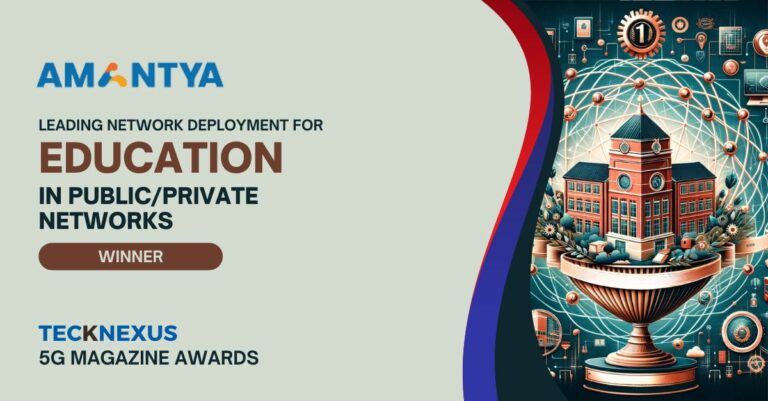5G is currently of particular interest for all applications that require or benefit from high data throughput, low latency, and high reliability. 5G represents an opportunity to completely rethink processes, to act with far more flexibility, and to generate new benefits from the combination of data and AI. The VDMA (VDMA is the largest network organization for the mechanical engineering industry in Germany and Europe) and the Fraunhofer Institute for Integrated Circuits IIS developed in 2020 more than 30 use cases for 5G in manufacturing.
The following overview shows the main categories under which these use cases can be categorized. Furthermore, several examples of the usage of 5G in the manufacturing and automation domain are described in a whitepaper by the 5G-ACIA.
Examples are connectivity for the shop floor, seamless integration of wired and wireless components for motion control, local and remote control-to-control communication, mobile robots and Automated Guided Vehicles (AGV), as well as closed-loop control for process automation and remote monitoring for process automation.
In addition, the field of retrofitting applications can benefit from 5G. For example, collecting and analyzing data from machines in the field via machine learning tools not only supports optimization and efficiency gains but also allows for entirely new concepts like predictive maintenance. A new feature set for 5G networks is the achievable positioning accuracy. With 3GPP Release 17 and later, 5G offers the possibility of positioning in dense deployments with possible accuracy of less than one meter.
This is particularly important in manufacturing. With real-time information on the position of machines, vehicles, products, tools, and materials, the production and logistics processes become more transparent and can thus be adapted and optimized more flexibly. Furthermore, thefts can be reduced, and booking processes can be automated. At Fraunhofer IIS, we pay particular attention to the aspect of positioning within 5G networks.
The combination of real-time positioning and reliable data communication will become of crucial importance at many manufacturing sites. This is driven by the growing use of drones, automated guided vehicles, and mobile robots in production. Precise positioning and ultra-low latency communication using 5G is also employed in a variety of virtual or enriched reality applications (VR and AR). This is increasingly used in manufacturing to increase flexibility and enable remote applications.
Achieving success with application-oriented thinking
An application-oriented approach is a very practical way for companies in the early stages of making their decision on how and when to start with 5G. The definition of dedicated use cases helps to collect required parameters that need to be met and, based on those, allows a valid and well-founded decision on how and when to invest in 5G or other technologies.
Such a use case-oriented approach starts with the creation of a short description of the use case, its objective and scope, the involved actors, and basic assumptions on environmental conditions. Then, technical KPIs like velocity and density of the user equipment are collected and dedicated requirements on the intended 5G system, such as latency, service availability and service area or positioning accuracy, have to be defined.
In order to determine if 5G is suitable for a certain use case, the requirements of these selected use cases can then be compared to the performance capabilities of 5G. The combination of a generic use case description, bringing together the involved actors and the processes with the technical requirements of the technology, allows the companies to achieve a qualified assessment. It also enables companies to compare different technologies or 5G releases.
This practice of a dedicated definition of use cases should be carried out by all companies before implementing 5G and has shown positive results for many companies over the past three years. This exercise also helps in the prioritization of applications, as well as the development of further ideas.
The importance of NPN for manufacturing
In manufacturing, campus networks (NPN – Non-Public Networks) offer a great opportunity to realize not only high-performance but also secure wireless communication networks that will offer a wide range of services, e.g. the transmission of sensor data from the production process or the positioning of components, for applications related to Industry 4.0.
In some countries, e.g., Germany, there are frequency bands specifically dedicated to campus networks. First licenses have been granted already, and networks are being built-up, such as the Open RAN-based campus network at Fraunhofer IIS in Nuremberg.
This “5G Bavaria Industry 4.0 OPEN RAN Testbed” is a full-scale installation pushing the limits of 5G for Industry 4.0 applications. The testbed covers two sites and includes two office buildings, an industrial indoor area, an outdoor area, and a parking garage on approx. 22.000 qm2. In its final expansion, the 5G Bavaria testbed will support over 50 radio units, offering communication and positioning tests under realistic conditions.
The future of manufacturing, enabled by 5G
Many use cases as mentioned above can already be implemented with products based on the current releases 16 and 17 of 5G, including Ultra-Reliable Low Latency Communication (URLLC) and Time-Sensitive Networking (TSN). The power of the upcoming 5G releases is to enable an intelligent manufacturing organization with real-time data (communication and positioning) across all operations. Advanced and 6G will also include artificial intelligence to, for example, make it even more robust against the typical multipath propagation and interference of radio signals in manufacturing environments through data-driven methods.
Novel applications, e.g., in the field of high-speed robotics, will become possible by anomaly detection in radio channels during running operations. Not to forget, Industry 5.0, a topic of the future, is already turning into a penetrating trend. INDUSTRY 5.0’s priority is to efficiently utilize the workforce of machines and people in a synergetic environment. This progress requires innovative information and communication technologies such as 5G and its successor generations to enable solutions for the increasing need for support systems in industrial production. Not all paths have been taken here yet and not all potential has been raised. The search for innovative solutions has therefore to continue in research, development and implementation.
Hurdles to overcome to make 5G extensively used in manufacturing
The performance of 5G in the industrial environment is strongly influenced by the harsh surroundings, by installation conditions, and infrastructure details such as antenna placement as well as the hardware and software support of the mobile devices in use.
Particularly challenging are the large number of parallel use cases and requirement profiles that need to be supported, which make it difficult to select network components and necessary functionalities.
In addition, there is the growing variety of possibilities regarding implementation, especially through new solution providers in the field of campus networks. Since the 3GPP standardization organization continues to extend the functionalities and capabilities over the 5G Releases, careful and thorough examinations are needed to what extent industrial applications can already be fully implemented now and which applications will only become possible with later 5G releases.
Summary and Outlook
Like any generation of mobile communications, 5G will undergo continuous development and gain significant relevance for industrial users in the coming years. A combination of cable and 5G, as well as a mixed operation of different radio systems, will be the reality for a long time to come. The use cases driving 5G in the coming years in manufacturing include the flexibilization of production, driverless transport systems, mobile operator panels, process monitoring, and new human-machine interfaces like Augmented Reality (AR). In addition, 5G enables new manufacturing concepts like a human-centric Industry 5.0 where humans and robots will eventually directly collaborate with each other.
The above-mentioned use cases are just an excerpt of all possible 5G use cases in manufacturing. For all individuals, robots, vehicles and moving objects in and between buildings on a factory ground, there is an increasing need for reliable communication and accurate positioning to improve process flow, overall facility management, and security. The trend in manufacturing points in the direction of multipurpose technologies such as 5G, which, in the future, can handle both communication and positioning requests.
Industry 4.0 has transformed manufacturing sites into interconnected, smart, and efficient factories. 5G will now transform Industry 4.0 into Industry 5.0, helping the industry to become more human-centric, more resilient, and more sustainable by remaining economically competitive at the same time.




























































